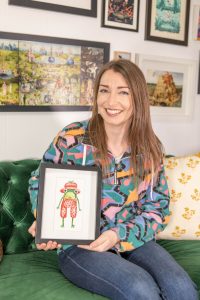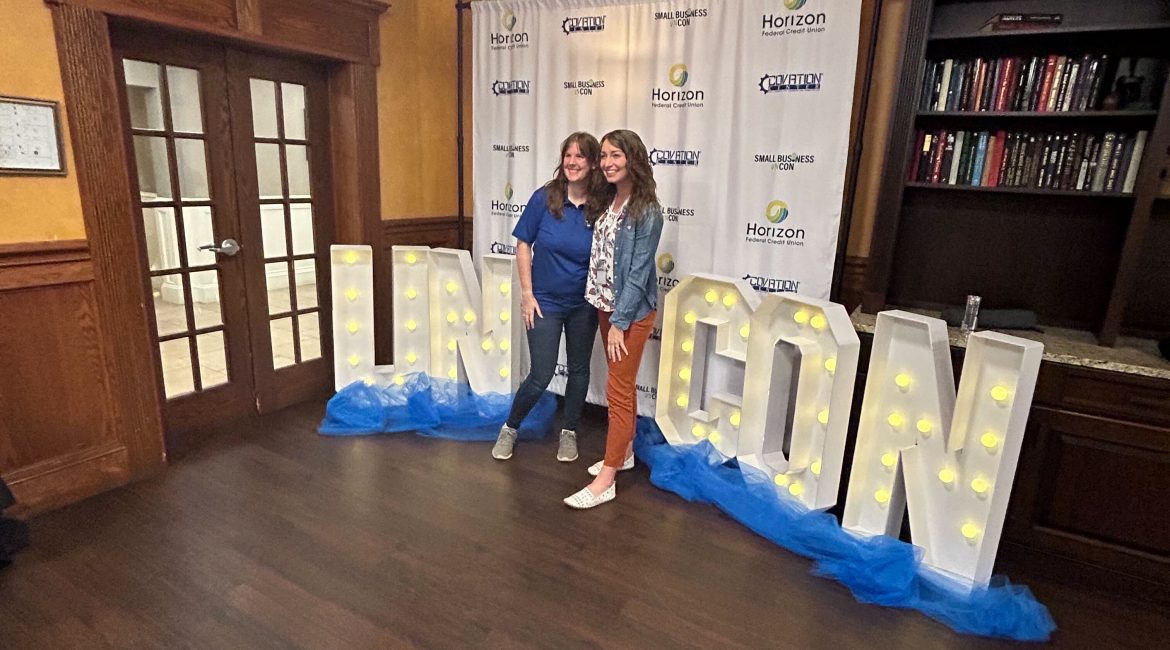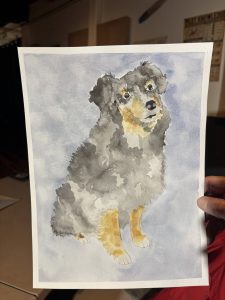From Hobby to Full-Time Art: A Journey with Hannah Smolensky of Owl Feather Watercolors
Local artist Hannah Smolensky’s journey from casual painter to a full-time professional is both inspiring and packed with lessons for anyone looking to make art a viable career. In this conversation, Hannah shared her story with Stephanie, detailing how she discovered her passion, her transition from teaching history to running her own art business, and the mindset shifts that turned her creative hobby into a sustainable income source. Here’s a deep dive into Hannah’s path to success, complete with insights and tips for aspiring artists.
Discovering a Passion for Watercolor
Hannah’s artistic journey began unassumingly. Growing up, she was always creative but didn’t see herself as an artist. This changed in high school when she first experimented with watercolor. Although she didn’t see herself as the “artsy” type, she quickly found that watercolor clicked for her in a way other mediums hadn’t. She describes her journey as a slow transformation, where, over time, her doodles began to take on a more professional quality, and the “hobby” started evolving into a skill set she could share with others.
From History Teacher to Professional Artist
Initially, Hannah envisioned a career in academia, studying history and teaching at a private school while painting on the side. After several years of teaching, she took a job with ancestry.com and then with the Carlisle Army Heritage Education Center as an archivist. During this time, she continued posting her art online, growing her audience slowly on Instagram. She even started participating in local art shows as a way to share her work. Though she loved history, she found herself increasingly drawn to the creative freedom that painting offered.
For Hannah, the decision to go full-time with her art business wasn’t instant—it was a series of small but impactful steps. The moment came when her archivist position allowed her to work from home, cutting out a long commute and freeing up valuable time. Rather than using this time to relax, she devoted it to expanding her art business. Within weeks, she realized her art income could replace her full-time job, and by April, she took the leap to focus on her art full-time.
The Mindset Shift: From Hobbyist to Business Owner
Hannah credits her participation in the Covation Center masterclass with helping her think of her art as a business rather than a hobby. The program helped her define her audience, diversify her income streams, and refine her business goals. She learned the value of creating a lasting customer experience, understanding her audience, and strategically planning for seasonal shifts in her business.
“Other people in the program taking me seriously made me feel free and comfortable to take myself seriously, too.”
Building Multiple Revenue Streams
To ensure financial stability, Hannah recommends that artists develop more than one revenue stream. For her, this means selling art at local markets and teaching watercolor workshops. She points out that the audience for her artwork isn’t always the same as the audience for her workshops, so diversifying has allowed her to connect with different customer bases without over-relying on a single income source.
“If you’re going to do art as your job, have two streams of artsy income, or a part-time job. That’s the best way to keep it sustainable and enjoyable.”
Overcoming Challenges with Professional Support
Hannah’s coaching with Stephanie in the Profitable Creators course has given her the accountability she needs to reach her goals and adapt to the ebb and flow of her business. Originally, Hannah was focused on pursuing wholesale opportunities but realized, with Stephanie’s guidance, that she could earn more by doubling down on events during the peak season. Now, she plans to revisit wholesale after the busy event season, applying the knowledge she’s gained to maximize revenue year-round.
Turning Art into Products
Hannah has mastered the art of transforming her original watercolor paintings into versatile products. She sells prints, cards, and stickers, which she outsources for higher consistency and quality. This allows her to focus on painting while still bringing her work to a wider audience. She also creates pins, keychains, and other small items that appeal to her fans at art shows and markets.
Key Takeaways for Aspiring Artists
As Hannah’s story shows, turning an art hobby into a full-time income is a journey that requires a mix of passion, planning, and persistence. Here are Hannah’s top pieces of advice for aspiring artists:
- Diversify Your Income: Relying solely on selling art can be stressful. Having a secondary income source, like teaching, commissions, or freelance projects, creates stability.
- Invest in Mindset and Training: Professional programs can help you develop the business mindset and skills needed to support and sustain an art career.
- Streamline Production: Outsource where possible and create products that are cost- and time-efficient, so you can keep your focus on creating.
- Adapt to Seasons and Trends: Art markets and trends shift. Be prepared to adapt, using slower periods to plan for the busier times and focus on diversifying revenue.
- Believe in Your Worth: Hannah emphasizes that taking yourself seriously as a business is essential to success. If you see your work as valuable, others will too.
Hannah’s path to building Owl Feather Watercolors shows that success is possible with careful planning, continuous learning, and a strong support system. She serves as an inspiring example for those who dream of making a living through their art, offering both practical advice and proof that creative dreams can indeed be a reality.
Follow Hannah’s journey and check out her work on Instagram at Owl Feather Watercolors.


